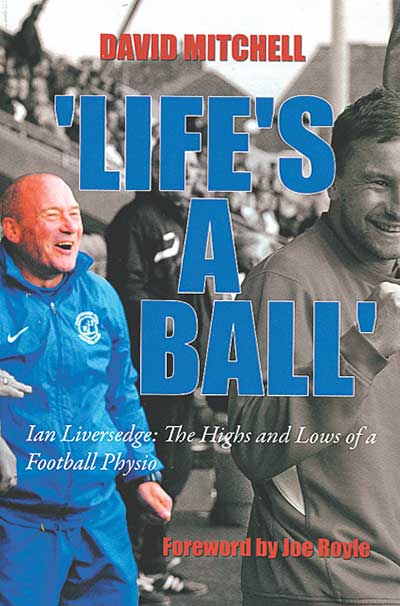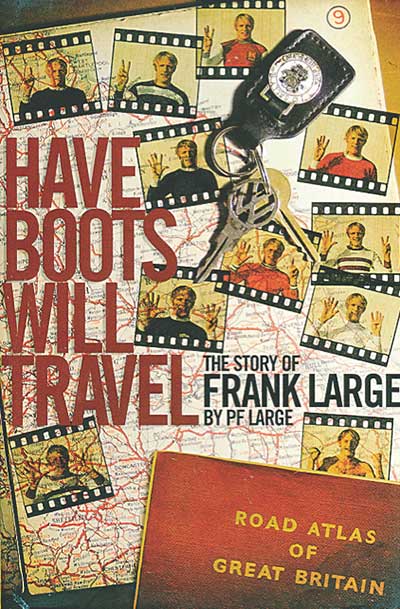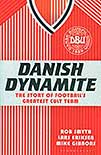Search: 'Frank Large'
Stories
Latics faced hunt for new manager, a winding-up petition and ownership uncertainty
6 August ~ The start of 2016-17 can’t come soon enough for Oldham Athletic fans like me. Last season ended on something approaching a high. From near certainties for relegation, the return of John Sheridan as manager kickstarted a remarkable recovery that saw us survive for another season in League One.
 Ian Liversedge: the highs and lows of a football physio
Ian Liversedge: the highs and lows of a football physio
by David Mitchell
AuthorHouse UK, £10.95
Reviewed by Brian Simpson
From WSC 337 March 2015
Ian Liversedge had a long career as an itinerant football physio working for 20 clubs and 15 managers. The highlights are at the margins of his central story as he encounters famous people who played minor roles in his life. As a young player who didn’t make the grade as a pro he experienced the detachment of Everton’s legendary manager Harry Catterick and later encountered Brian Clough, in decline but still gracious in victory. A quote from Kevin Keegan in his playing days at Newcastle goes someway to explaining why striker Imre Varadi was on his way to accumulating 16 clubs: “OK, Varadi has scored 21 goals this season. I’ve set him up to score 60. How many times has he set me up? None. Fact.”
Less well known but vividly drawn is Accrington’s ex-chairman Eric Whalley. He had played for the club, managed them twice, taken a place on the board and eventually bought them. He funded player purchases but fell out with the local council about the cost of yoga classes for the club’s players. A major focus is the ten years Liversedge spent at Oldham from the mid-1980s, where the chalk-and-cheese chemistry of the taciturn Willie Donachie and the garrulous Joe Royle is captured well. His time at Newcastle also gives an insight into the management pairing of Keegan and Arthur Cox, yet very little of this is entirely new.
A desire to pack in as many stories as possible means that some topics don’t get followed up as fully as they might. For example, there are several incidental comments on the changes that have taken place in the treatment and medical care of players, but these are not considered in any coherent way. Some key points are better illustrated by a simple anecdote, such as when the gap between rehabilitation options at elite clubs and the rest is highlighted by noting that at smaller clubs his best option was sometimes to just take players for a walk and a coffee.
Towards the end of the book he describes meeting old friends from football when the conversation rarely touches on the game but is more about “the scrapes” they shared. But drinking exploits are the sort of tales that can only have been funny to those taking part and possibly not even then. Fans who followed Oldham in the period he describes might feel slightly short changed to find that many at the club followed a motto Liversedge characterises as “win or loose, have a booze”.
His description of players’ behaviour, and his own, is at least frank as he acknowledges its impact on his family life. But there is little reflection on whether the behaviour should have a place within any professional sport, nor an understanding of the way it feeds the negative stereotype of football held by many people. In the end, and despite the strengths of the book, his largely uncritical acceptance of some of what he saw or did leaves an impression in places of an opportunity missed.
 The story of Frank Large
The story of Frank Large
by P F Large
Pitch Publishing, £17.99
Reviewed by Alan Fisher
From WSC 336 February 2015
Growing up in the early 1960s, I got to know the players not through television or the papers but via my collection of bubble gum cards. On the front was a colour photo of my heroes, I devoured the brief biography on the back. Many times I shuffled the pack to create imaginary teams but one man always led the line.
Frank Large was the epitome of what I believed a centre-forward should be. Rock solid, over six foot tall, his rugged face battered, I presumed, from aerial battles with similarly uncompromising defenders. The right attributes too: “Honest, works hard, good in the air.” False nines, a pivot, mobile and pacy, I get it, times have changed but that image remains.
Large played for nine League clubs between 1958 and 1973, a total of 629 appearances including three spells at Northampton Town. His career spanned four divisions and he scored goals in all of them, well over 200 in total.
Large’s assessment of his talents is characteristically straightforward: “I can only do one thing but I’m good at it.” The story of this engaging, open man is lovingly told by his son through match reports, personal memories and interviews with ex-pros and managers, including his boss at Fulham Bobby Robson, who speaks with the humour and tenderness that footballers of a certain generation reserve for team-mates who they respect as a professional and friend. There’s a theme though – knock it up to Frank, Frank gets on the end of it, Frank never gives up.
Managers wanted him, often to give that extra push for promotion or to stave off relegation. Yet he was also easily dispensable as these same managers looked to upgrade. In 1966 alone he played for Carlisle, Oldham and Northampton. If he had regrets, he seldom showed them because this proud man was grateful for the chance to play.
There’s no in-depth analysis but the many anecdotes portray the life of this football man as a world away from that of today’s top professionals. Arriving at Halifax, his first club, he looked so bedraggled the other players gave him clothes. His reward for a cup run with Northampton was four new tyres for his second-hand turquoise Mini Clubman. There are many more and enjoyable they are too.
Perhaps the most telling insight comes when the game has finished with him. Returning home after his first morning in a factory, lungs and eyes chocked with toxic dust, he vows never to return yet picks himself up and endures the Dickensian conditions, 60 hours a week for 11 years, to provide for his family.
Frank Large died in 2003 aged 63, content in retirement in Ireland. His son’s readable, pleasing account does ample justice both to his father and a bygone age of football. Then again, Large will always be fondly remembered by supporters across the country as much for his wholehearted approach as for his goals. One of his most important for Leicester in Division One is described thus: “Frank slides in on his arse and crashes a shot into the top corner.” That’s my kind of centre-forward.
 The story of football’s greatest cult team
The story of football’s greatest cult team
by Rob Smyth, Lars Eriksen and Mike Gibbons
Bloomsbury, £12.99
Reviewed by Jonathan O’Brien
From WSC 328 June 2014
If you wanted entertaining football from a European national side in the mid-1980s, the pickings on offer were slim. Spain were a shower of hackers, Germany ruthless but uninspired, Italy suffering a post-1982 hangover, Holland in the doldrums – and England were England. There were only three shows in town: France, the USSR and Denmark.
Michel Hidalgo’s marvellous France team chiselled their names down in history by winning the 1984 European Championship, and the USSR lit up Mexico 86 in tremendous style. The Danes were left with nothing after a pair of traumatic defeats by Spain in Lyon and Querétaro. The memory of the sizzling football remains, though, and this reappraisal of them is long overdue. Despite its tendency to write subsequent Denmark teams out of history, Danish Dynamite, which grew out of a 2009 article on the Guardian‘s website, is largely terrific.
With the exceptions of Frank Arnesen and Jan Molby, all the players are interviewed, as is manager Sepp Piontek, now aged 74 and still full of combative vigour. A ruthless hatchet-man as a player in the Bundesliga, Piontek brought a dash of cold-water efficiency to Danish football’s free-spirit mentality and coaxed results out of them that would have seemed utterly implausible just five or six years previously. The team was full of offbeat, off-kilter characters: Soren Lerby, so ferociously competitive that Morten Olsen dubbed him Dr Jekyll and Mr Hyde; Preben Elkjaer, the party animal who never drank beer; Ole Qvist, the goalkeeper who played out of his skin at Euro 84 and then went straight back to his job as a motorcycle police officer in Copenhagen; Ivan Nielsen, the easygoing centre-back who is now a plumber and conducted his interview while sitting on an upturned bucket in his garage.
And the football was never less than blinding. As is mentioned here, Denmark played as if it was always the 85th minute and they were a goal down. Watch one of their games on DVD today – the 5-0 thrashing of Yugoslavia at Euro 84, for example, or the extraordinarily action-packed 4-2 victory over the USSR in Copenhagen a year later – and the footage looks like an animated cartoon on fast-forward, with players flooding into the midfield from all areas of the pitch, joining up with the attack in their droves, and scoring goals from the craziest of angles. The party was too good to last.
Just ten days after dismembering Uruguay at the 1986 World Cup, the Danes exited the competition in shattering, and somehow tragic, fashion when a solid but unexceptional Spain happily picked them off on the counter-attack and beat them 5-1, scarcely credibly. And that’s more or less where the story ends – Euro 88, where Piontek’s ageing team lost all three matches, is barely mentioned, and the subsequent glory of Euro 92 is covered in just a couple of pages. This comes across as laziness and a bad call, but in all other respects Danish Dynamite is a wonderful read and an exhilarating nostalgia trip.